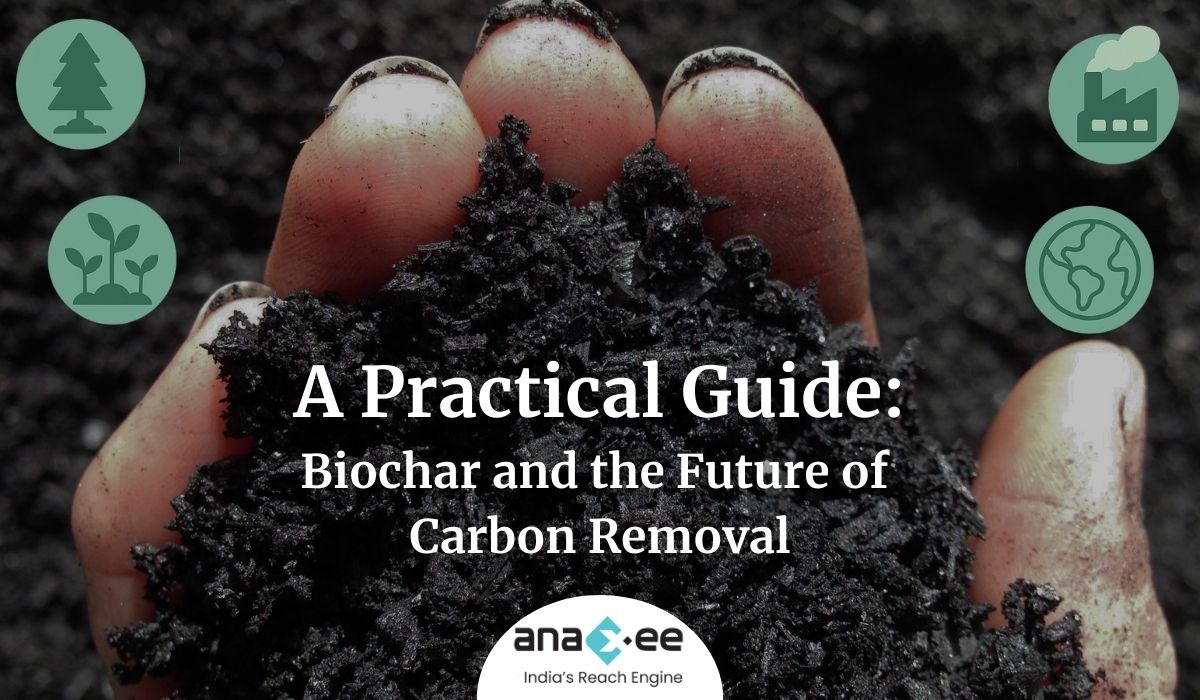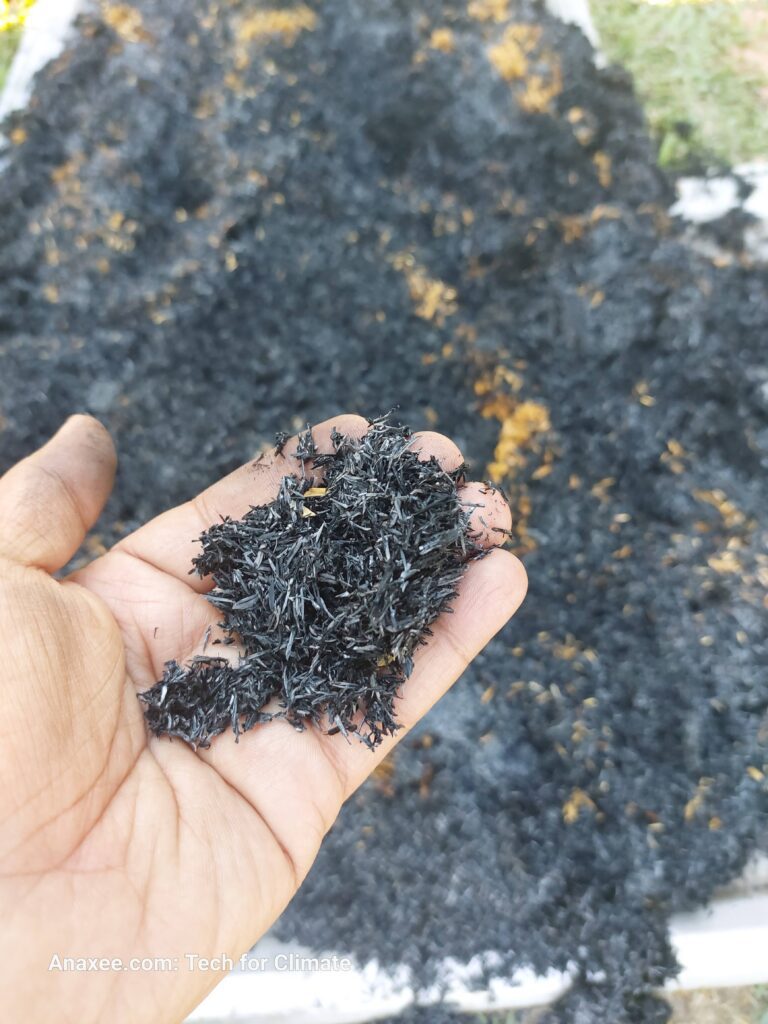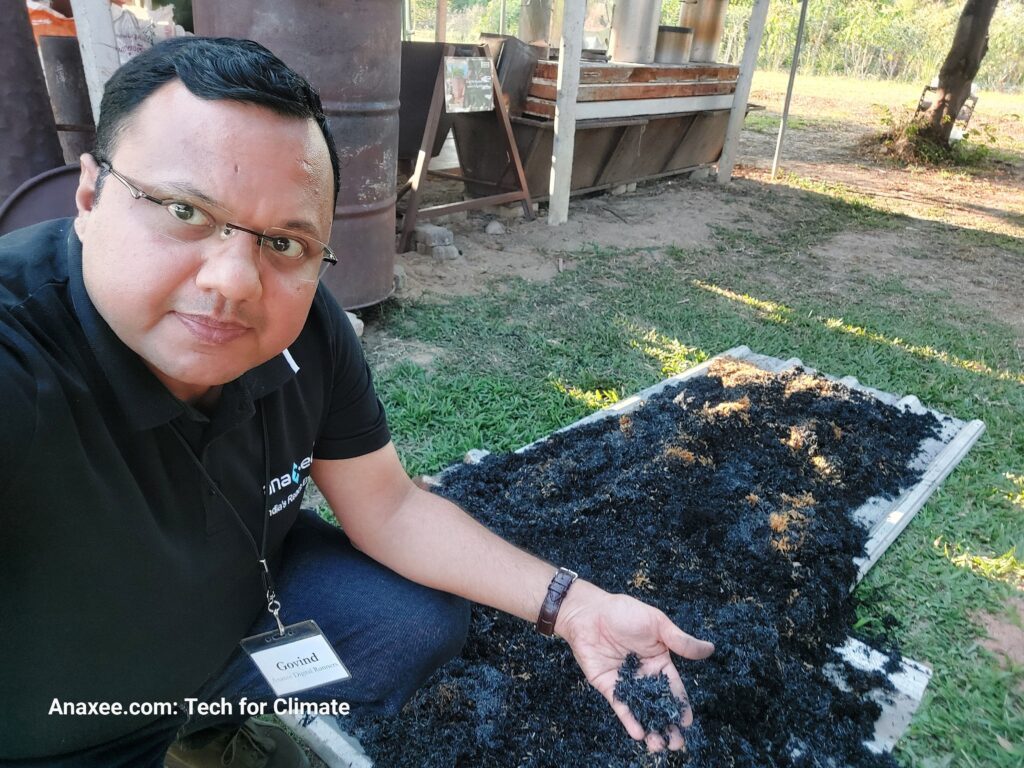BLOG

Biochar and the Future of Carbon Removal: A Practical Guide
Biochar and the Future of Carbon Removal: A Practical Guide
Introduction
The world today faces an undeniable truth: cutting emissions alone will not be enough to achieve net-zero. Alongside reducing greenhouse gases, we must also find ways to remove carbon dioxide (CO₂) that is already in the atmosphere. Scientists call these solutions carbon dioxide removal (CDR).
Among the different approaches being explored, biochar has gained attention as one of the most practical, affordable, and scalable tools available today. It is not a futuristic technology that exists only in labs. Instead, it is something both ancient and modern — a material humans have used for centuries but now refined for climate action.
This blog will unpack what biochar is, how it helps remove carbon, its benefits beyond climate, and why it may play a central role in the future of carbon removal.
1. What is Biochar?

At its simplest, biochar is a charcoal-like material made by heating organic matter such as crop residues, forestry waste, or animal manure in the absence (or near-absence) of oxygen. This process, known as pyrolysis, prevents the biomass from decomposing fully and releasing its carbon back into the atmosphere as CO₂.
Instead, the carbon is locked into a stable form that can last for hundreds or even thousands of years. This means biochar is essentially a durable carbon sink — once created and stored in soils or other applications, the carbon remains captured rather than re-emitted.
Think of biochar as “bottling up carbon” that plants once absorbed from the atmosphere and storing it in a form that nature cannot easily break down.
2. Breaking the Carbon Cycle
To understand biochar’s importance, we need to look at the natural carbon cycle. Normally, plants absorb CO₂ from the atmosphere through photosynthesis. When the plant dies, microbes decompose it, and most of that stored carbon goes back into the air. In fact, studies suggest about 99% of carbon in plant biomass returns to the atmosphere during decomposition.
Biochar interrupts this cycle. By converting plant matter into a stable solid before decomposition, around 50% of the carbon remains captured. This locked carbon can stay sequestered for centuries or even millennia depending on conditions like soil temperature, feedstock type, and pyrolysis settings.
This durability is what makes biochar different from tree planting or other short-lived carbon sinks. Trees store carbon as long as they are alive — but drought, fire, or disease can release it back quickly. Biochar, on the other hand, resists decay.
3. The Science of Pyrolysis
The production of biochar through pyrolysis involves heating organic materials at high temperatures (usually 500°C–700°C) with little oxygen present. Under these conditions:
-Volatile gases are released (which can be captured and used as energy).
-Bio-oil is produced as another by-product.
-A solid carbon-rich structure, biochar, is left behind.
What makes biochar unique is the aromatic carbon rings that form during pyrolysis. These structures are chemically stable and resist microbial degradation. That is why biochar remains in soils for so long without breaking down.
Depending on the reactor design, pyrolysis can also create co-benefits:
-Biogas and syngas for renewable energy.
-Bio-oil for industrial use.
-Heat and electricity for local applications.
This combination of carbon storage and useful by-products makes biochar both an environmental and economic opportunity.
4. Benefits Beyond Carbon Storage
Most people first hear about biochar in the context of climate change. But its potential goes much further. Biochar is often described as a multi-benefit solution, because apart from storing carbon, it helps with:
🌱 Soil Health
-Improves water retention in dry regions.
-Enhances nutrient availability for crops.
-Creates micro-habitats for beneficial soil microbes.
-Increases average crop yields by 9–16% according to research.
💧 Water Purification
-Biochar’s porous structure allows it to absorb pollutants and toxins.
-Can be used in bioremediation of contaminated soils and waters.
🏗️ Construction and Industry
-Mixed with concrete, biochar can reduce cement use and increase durability.
-Works as a lightweight, strong additive for building materials.
🐄 Animal and Agricultural Uses
-In small amounts, biochar can be used in animal feed to improve digestion.
-It also helps reduce methane emissions from livestock waste.
These benefits make biochar appealing not only to carbon markets but also to farmers, industries, and local communities.
5. Global Potential of Biochar
So, how big can biochar really be? Research suggests biochar could remove up to 6% of annual global emissions if produced and applied at scale. That is massive, considering how few other CDR technologies can claim such readiness.
-Countries with high potential: China, Brazil, and the United States due to their large agricultural residues.
-Readiness level: Biochar is at Technology Readiness Level 8 (TRL-8), meaning it is already proven at commercial scale.
-Accessibility: Unlike direct air capture (DAC), which requires huge investments, biochar can be done with relatively simple setups — even rural farmers can produce it using local kilns.
This mix of scalability, affordability, and co-benefits is why many experts see biochar as the leading near-term solution for durable carbon removal.
6. How Biochar Compares to Other Carbon Removal Methods
There are many other CDR approaches being explored:
-Direct Air Capture (DAC): Pulls CO₂ directly from the air but is extremely expensive (often above $500 per ton).
-Enhanced Rock Weathering (ERW): Crushes rocks to speed up natural carbon absorption but is logistically heavy.
-BECCS (Bioenergy with Carbon Capture and Storage): Burns biomass for energy and captures emissions but requires major infrastructure.
Compared to these, biochar:
-Costs between $82–$246 per ton of CO₂ removed (more affordable).
-Already has projects up and running at commercial scale.
-Delivers side benefits like soil fertility, something DAC and ERW cannot offer.
In short, biochar is a “here-and-now” solution rather than a distant future option.
7. Challenges in Scaling Biochar
Of course, biochar is not without its hurdles. Some key challenges include:
-Feedstock sustainability: Projects must ensure they use true waste biomass, not crops grown specifically for biochar (which could compete with food).
-Methane emissions in low-tech kilns: Poorly managed pyrolysis can release methane, offsetting climate benefits.
-Certification and credibility: Buyers need assurance that each carbon credit represents a real, durable removal.
-Price gap: Today, suppliers often need $180/ton to remain profitable, but many buyers are only willing to pay $130–$150/ton.
Addressing these issues will be key for biochar’s growth. Strong digital Monitoring, Reporting, and Verification (dMRV) systems are helping, especially in small-scale projects across Asia and Africa.
8. Why Biochar Matters for the Future of Carbon Removal
Looking ahead, biochar is likely to play a central role in the climate solutions portfolio. Here’s why:
-It is market-ready and already delivering millions of tons of removals.
-It is scalable, adaptable to both small farms and industrial plants.
-It brings co-benefits, making it attractive beyond just climate.
-It complements, rather than replaces, other CDR methods.
The voluntary carbon market has seen biochar account for over 90% of durable CDR deliveries in 2023–2024. That dominance shows its near-term importance. While DAC or rock weathering may scale later, biochar is the strongest available tool we have now.
Conclusion
Biochar is not just a scientific curiosity — it is a practical solution that bridges ancient techniques with modern climate needs. By turning waste into a durable carbon sink, biochar can help stabilize the climate, improve soils, create jobs, and provide energy co-products.
As the world races toward net-zero, biochar stands out as a tool we can deploy today at scale. It will not solve everything, but it can be a cornerstone of a wider strategy that combines emission cuts, carbon removals, and ecosystem restoration.
In short, the future of carbon removal is not only about high-tech machines or futuristic concepts. It is also about simple, proven, nature-based innovations like biochar.
About Anaxee:
Anaxee drives large-scale, country-wide Climate and Carbon Credit projects across India. We specialize in Nature-Based Solutions (NbS) and community-driven initiatives, providing the technology and on-ground network needed to execute, monitor, and ensure transparency in projects like agroforestry, regenerative agriculture, improved cookstoves, solar devices, water filters and more. Our systems are designed to maintain integrity and verifiable impact in carbon methodologies.
Beyond climate, Anaxee is India’s Reach Engine- building the nation’s largest last-mile outreach network of 100,000 Digital Runners (shared, tech-enabled field force). We help corporates, agri-focused companies, and social organizations scale to rural and semi-urban India by executing projects in 26 states, 540+ districts, and 11,000+ pin codes, ensuring both scale and 100% transparency in last-mile operations.
Ready to collaborate on your next Climate or Carbon project?

Email us at: sales@anaxee.com


